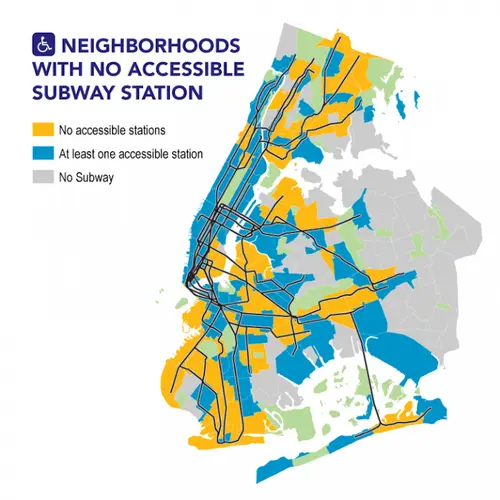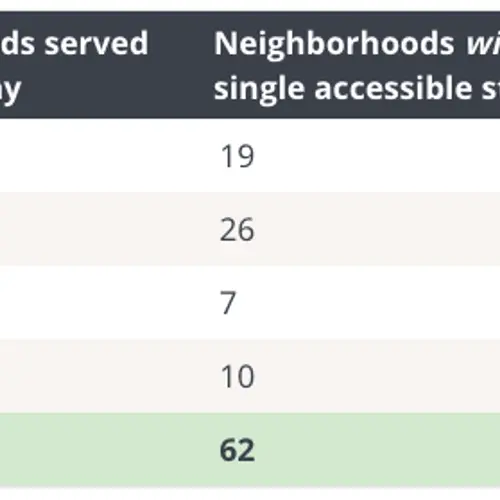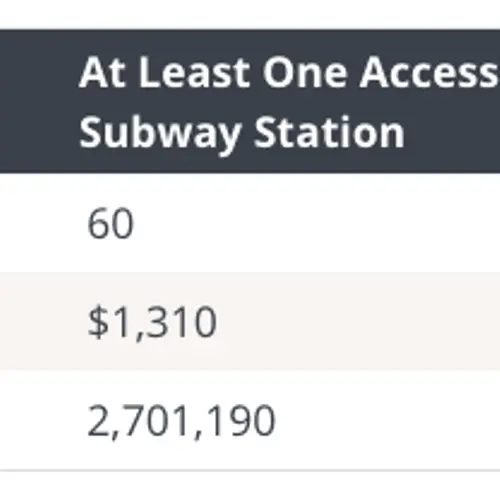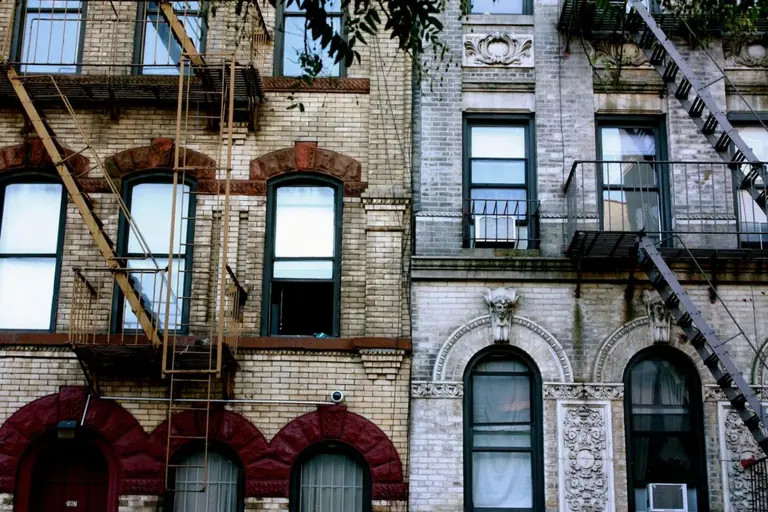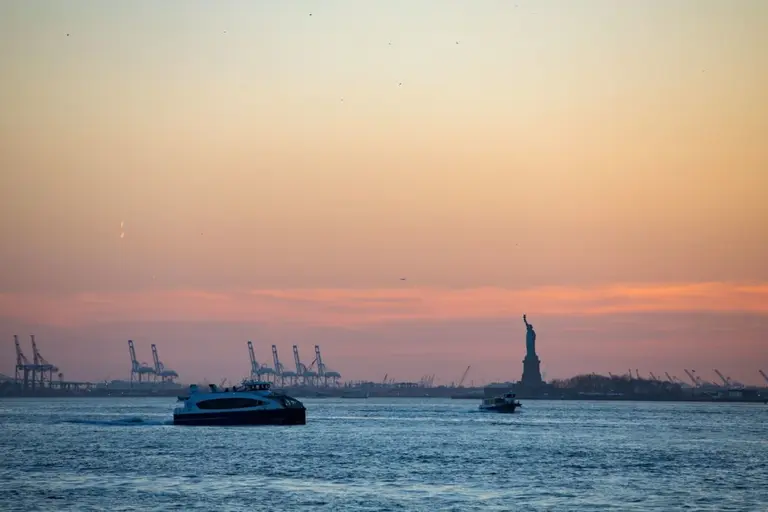62 New York City neighborhoods lack an accessible subway station
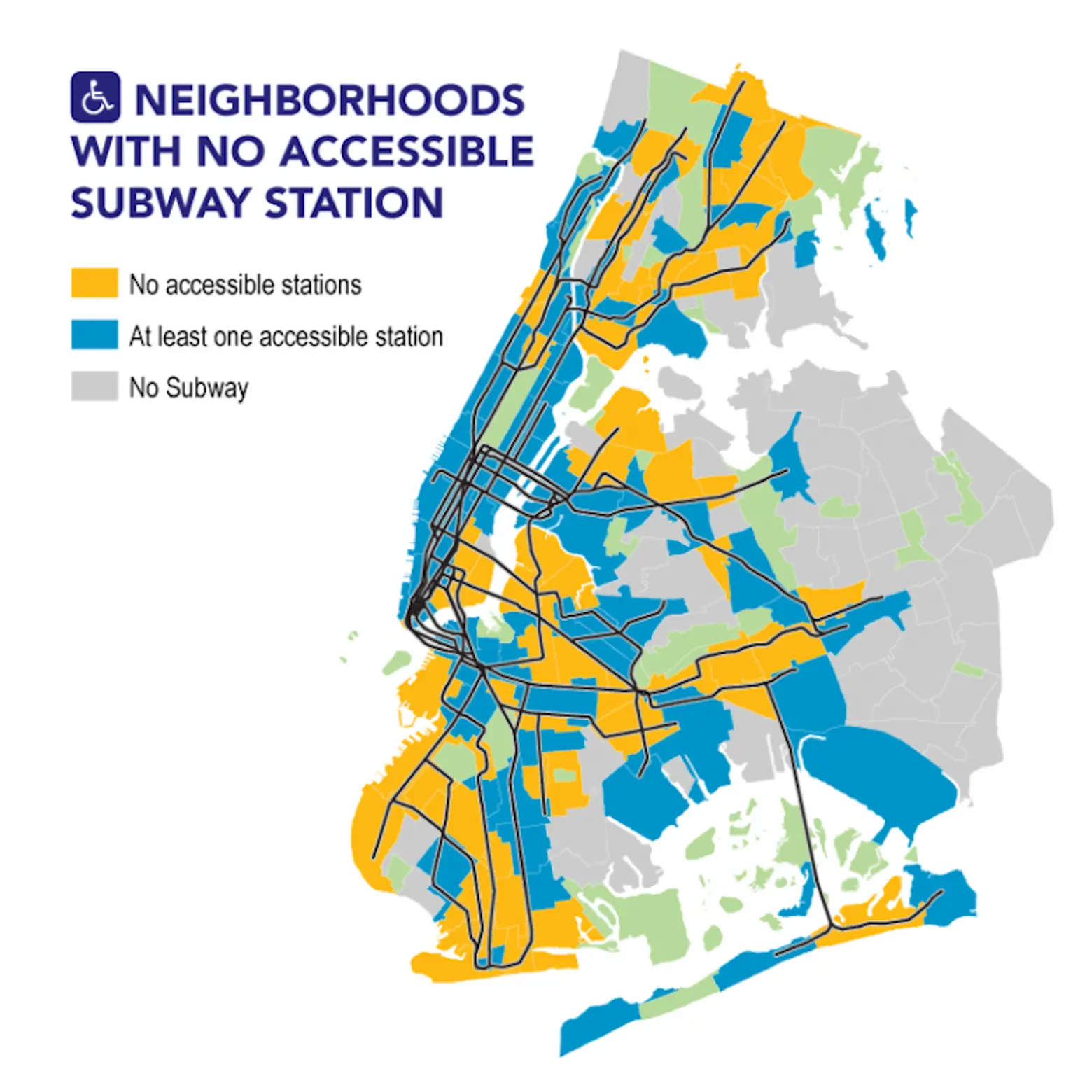
Via City Comptroller’s office
More than half of the 122 neighborhoods served by New York City’s subway system do not have a single accessible station, a new report by City Comptroller Scott Stringer found. And out of the 62 neighborhoods dubbed “ADA transit deserts,” 55 are in the Bronx, Brooklyn and Queens. In his report, “Service Denied,” Stringer details the gaps in accessibility for seniors and mobility-impaired New Yorkers and calls on the state legislature to create a new funding source dedicated to upgrades compliant with the American with Disabilities Act.
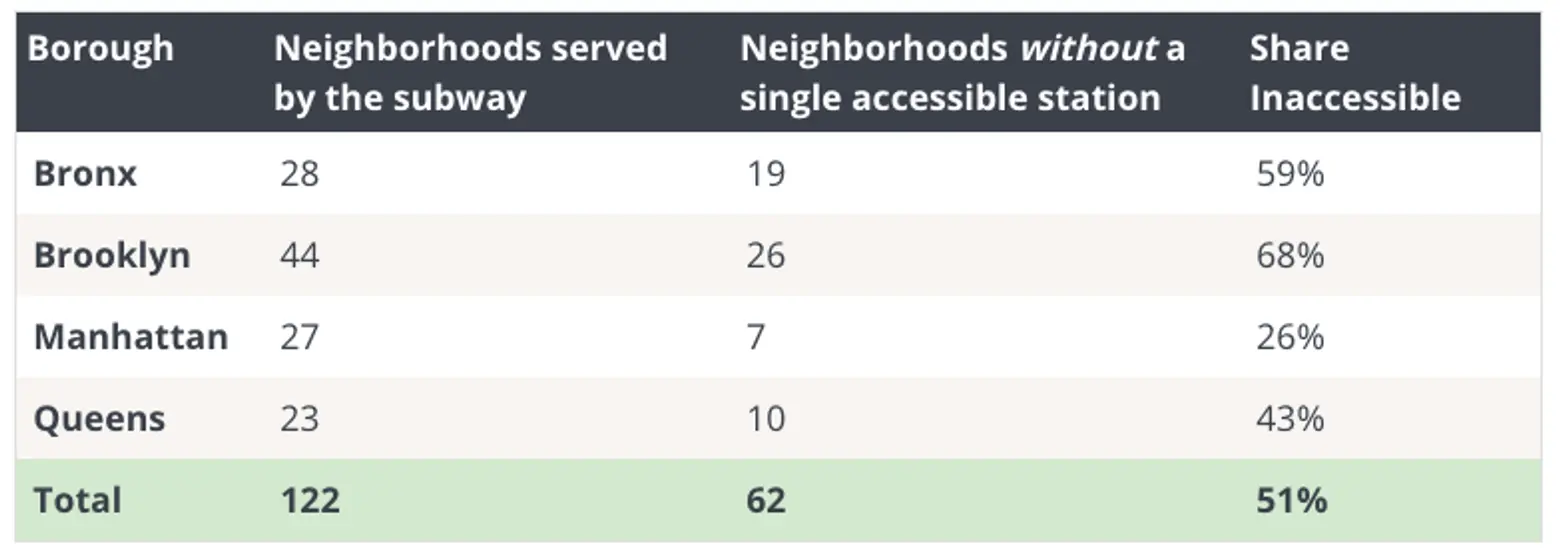
Via City Comptroller’s office
“Decades of underinvestment and neglect have real life consequences,” Stringer said in a press release. “For every inaccessible station, there is a New Yorker who can’t get to work, pick up their children from daycare, or visit their doctors. It’s simple – a person’s livelihood should not be dictated by their mobility status, and we must take action immediately to address this crisis.”
Only about 24 percent of the MTA’s 472 subway stations are considered ADA compliant, the lowest amount among the country’s rail systems in metropolitan areas. In the 62 neighborhoods that only have inaccessible stations, more than 199,000 mobility-impaired residents, 341,000 seniors and 203,000 children under the age of five live there.

Via City Comptroller’s office
According to Stringer, inaccessible subway stations affect where mobility-impaired residents or seniors choose to live, where they work and their overall cost of living. Median rents with at least one accessible station are more than $100 higher in neighborhoods with only inaccessible stations. Expensive rents on top of pricey medical care expenses and other services further the financial strain on these residents, the report found.
In March, the federal government joined a lawsuit accusing the MTA of not adding ADA upgrades when renovating stations. Passed nearly 30 years ago, the law requires transit stations to be accessible to the “maximum extent feasible.”
To address the gaps in accessibility, the MTA hired its first accessibility chief last month to oversee efforts to help mobility-impaired riders access them. The appointment comes as NYC Transit chief Andy Byford released his Fast Forward plan, which pledges to make 50 new stations ADA accessible in the next five years.
But, as Stringer wrote in his report, this plan would require a lot of external funding, as well as a new system for contracting and procurement. In “Service Denied,” the comptroller suggests introducing an $8 billion Transit Bond Act in the next legislative session in order to fund appropriate ADA upgrades.
RELATED:
